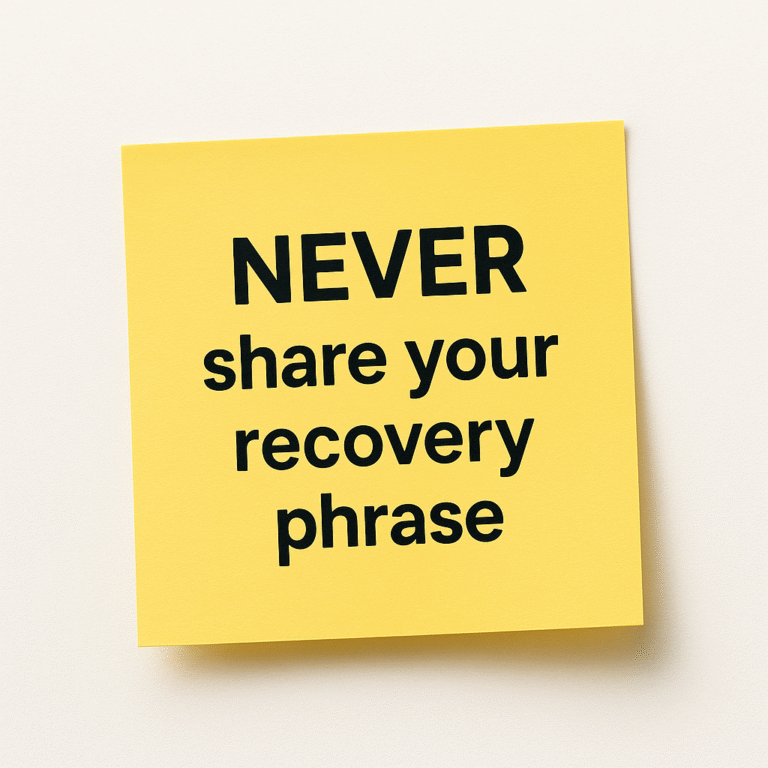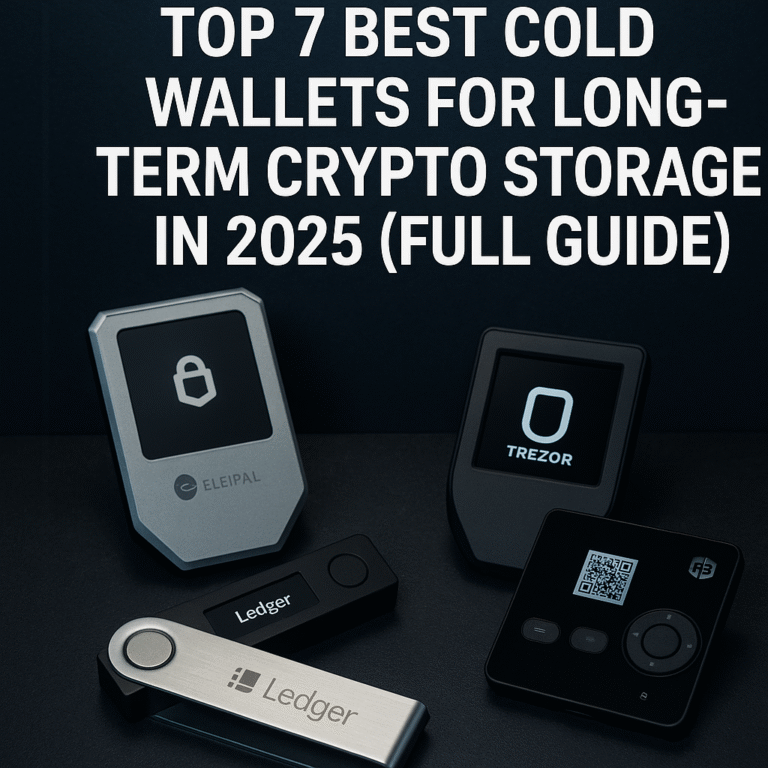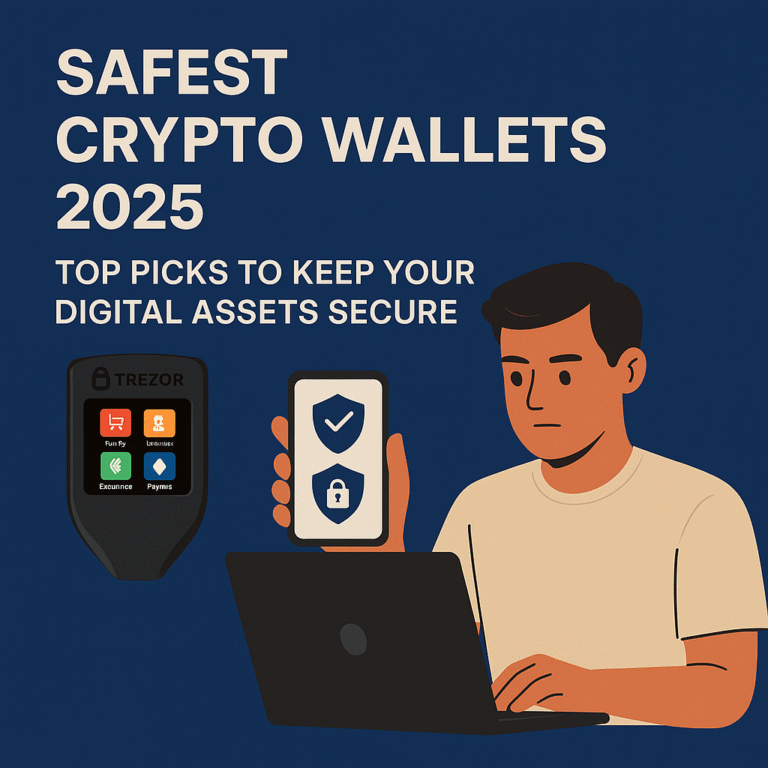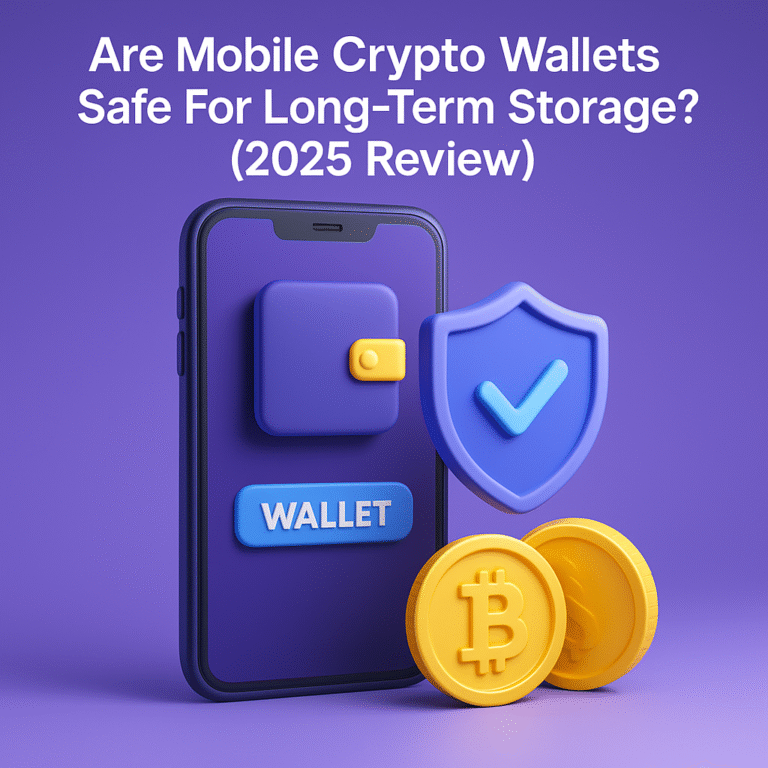How To Use A Digital Wallet For Crypto Securely (2025 Guide)
how to use a digital wallet for crypto securely
Learn how to use a digital wallet for crypto securely with essential tips on protecting your assets in 2025. Stay safe from threats and scams!

Many people worry about keeping their digital assets safe with a crypto wallet. One key fact is that using strong passwords and two-factor authentication (2fa) can stop most cyber attacks on your cryptocurrency wallet.
how to use a digital wallet for crypto securely
This guide explains How To Use A Digital Wallet For Crypto Securely, covering hot wallets, cold wallets, hardware wallets like Ledger Nano X, and the steps to protect your private keys from malware or phishing scams. 1 Stay here to discover how you can take control of your crypto security in 2025. 3
Key Takeaways
- Use strong passwords and two-factor authentication to protect your crypto wallet from hackers.
- Understand the difference between hot wallets (online) and cold wallets (offline) for storing digital assets safely.
- Pick a wallet type that matches your needs, like hosted, self-custody, or hardware wallets for better security.
- Backup your seed phrase offline to recover your wallet in case of loss or damage.
- Diversify storage methods by using both hot and cold wallets to reduce risks of losing all funds due to hacks or scams.
Understanding Digital Wallets for Crypto

Digital wallets help you store, send, and receive crypto assets safely using blockchain technology. You will want to understand hot wallets and cold storage before choosing the right option for your digital assets.
What is a digital wallet?

A digital wallet is a software program that stores your private keys and public keys. 1 It lets you access, manage, and use your crypto assets like Bitcoin or Ethereum. Only those who have the right cryptographic keys can move coins on blockchain networks.
Many cryptocurrency wallets exist today. 2 Some, such as Guarda Wallet, let users hold more than 400,000 currencies. Others, like Ledger hardware wallets, support thousands of cryptocurrencies including USDT and Solana.
Most wallets help you send and receive digital assets using QR codes or wallet addresses while keeping your coins safe from cyber criminals trying to steal them through fake websites or phishing scams.
Hot vs. cold wallets: Key differences

Understanding what a digital wallet does sets a strong foundation . 3 Next, you’ll see why choosing between hot and cold wallets shapes your entire crypto journey. Explore their biggest differences in this simple, side-by-side guide.
| Feature | Hot Wallet | Cold Wallet |
|---|---|---|
| Definition | Software program connected to the Internet, like Coinbase Wallet or MetaMask | Physical device or paper, kept offline, such as Ledger Nano or Trezor |
| Internet Connection | Always online | Always offline |
| Security Level | Lower; exposed to online threats and hackers | Higher; immune to most Internet attacks |
| Private Key Storage | Generated and stored online; higher risk of breach | Stored offline; never exposed to websites or software |
| Ease of Use | User-friendly; perfect for beginners and daily transactions | Less convenient; best for long-term security |
| Best Use Case | Quick access to crypto; sending and receiving funds often | Holding large amounts, like Bitcoin or Ethereum, for months or years |
| Risk Example | Phishing, malware, or exchange hacks in 2024 led to millions lost | Physical loss or damage, but safe from most cybercrime |
| Cost | Usually free to download and use | Hardware devices cost $50–$200 as of 2025 |
| Popular Brands | Coinbase Wallet, Trust Wallet, MetaMask | Ledger Nano S Plus, Trezor Model One |
| Who Should Use? | New crypto users, everyday traders | Investors, holders, security-focused users |
Mastering the key differences between hot and cold wallets makes your next steps clear. Select the option that fits your habits, whether you’re trading daily or planning for the future. Secure your crypto adventure with the right wallet, and watch your peace of mind—and your assets—grow.
Setting Up Your Digital Wallet

Start by picking a crypto wallet that matches your needs—choose between mobile wallets, desktop wallets, or even hardware wallets for extra security. Create your own strong wallet address and keep control over your private keys to protect your digital assets from theft or loss.
Choosing the right wallet: Hosted, self-custody, or hardware

Picking the right wallet is vital for securing your digital assets. Each type has its unique features and levels of security.
- Hosted wallets are like online bank accounts for your cryptocurrency. Coinbase, a popular example, manages your coins for you. This means you don’t have to worry about losing your private keys, but it also means you have less control over your assets. 4
- Self-custody wallets give you complete control over your cryptocurrencies. You’re in charge of your private keys. This kind of wallet requires a bit more knowledge about crypto security to prevent loss or theft.
- Hardware wallets offer the best security by storing your private keys offline. Ledger Nano X is a top choice among these gadgets, starting at $100. They are immune to most cyber attacks because they’re not connected to the internet. 5
Each option serves different needs based on how much control you want and the level of security you feel comfortable with. Hosted wallets provide ease and convenience, self-custody wallets put all responsibility in your hands, and hardware wallets offer strong protection against online threats.
Creating a secure wallet address

Install a trusted crypto wallet app like Trust Wallet, Exodus, or Electrum on your device. Open the app and select “Create New Wallet.” The app generates your unique wallet address using blockchain technology.
This address works as your personal inbox for digital assets such as bitcoins or tokens. 6
Protect your new wallet by setting up two-factor authentication (2FA) or multi-signature support if available. Write down the seed phrase shown during setup, and store it safely offline—never upload it to Google Drive or any cloud database.
Your seed phrase is the only way to decrypt and restore access in case of data loss due to malware attack or keystroke logging. 7
A strong crypto security strategy starts with creating a secure wallet and storing private keys in cold wallets like hardware wallets.
Take these steps before choosing between hosted services, hardware wallets such as Ledger Nano X, paper wallets, desktop wallets, mobile apps for iOS or Android devices… Next comes picking the right type: hosted exchange account, non-custodial self-custody software option, or cold storage solution.
Best Practices for Crypto Wallet Security

Stay alert to phishing scams and never share your private keys online. Use two-factor authentication, hardware wallets like Ledger Nano X, and keep your software updated for stronger crypto security—your digital assets deserve the best protection.
Using strong passwords and multi-factor authentication

A crypto wallet stays safer with strong passwords and multi-factor authentication (MFA). Passwords should be at least twelve characters long, mixing numbers, symbols, upper-case, and lower-case letters.
Avoid simple words or anything easy to guess. Use a password manager to help create and store complex passwords for your digital assets. 8
Multi-factor authentication gives your account an extra layer of security. Always turn on two-factor authentication (2FA) for your crypto wallets, like Coinbase Wallet or hardware wallets such as Ledger Nano X.
Choose authenticator apps such as Google Authenticator instead of SMS codes since SIM swaps are common in phishing attacks. These steps stop hackers from easily getting into your hot wallet or private key even if they know your password—helping you protect every cryptocurrency transaction on any device, browser, laptop computer, or mobile wallet. 2
Backing up your wallet and seed phrases

After setting up strong passwords and enabling two-factor authentication, focus on backing up your crypto wallet. Your seed phrase is a set of words that works as the backup key for your digital assets.
Store this list offline; write it down on paper instead of saving it digitally. This helps prevent hackers from stealing your private keys through phishing emails or malware. 2
Cold storage solutions like hardware wallets offer another strong layer of crypto security. Products such as Ledger Nano X, rated 4.5 out of 5 stars by over 13,000 users, keep private keys safe from online threats.
Always keep backups in different places—use a fireproof bag or a secure location at home to store your paper wallet or hardware device safely.
A lost seed phrase means lost access forever. Protect those words with care—your entire cryptocurrency balance depends on them.
Safely Using Your Digital Wallet

Protecting your crypto funds starts with smart habits as you use software wallets like desktop wallet apps or mobile wallets on your phone. Simple steps help keep your private key safe from phishing scams, double-spend issues, and sneaky websites—offering real peace of mind each time you make cryptocurrency transactions.
Sending and receiving crypto securely

Send and receive digital assets only through secure crypto wallets. Use a hardware wallet or cold storage like Ledger Nano X for high-value funds, since these stay offline and stop hackers. 2 Always use two-factor authentication (2FA) on your non-custodial wallet or mobile app to block most intruders; pick an app instead of SMS codes so no one can hijack your phone number.
Download your crypto wallet only from official websites or trusted stores to avoid phishing scams. Never enter private keys or seed phrases on any site unless you verify the URL is correct—the difference between coinbase.com and a fake page could cost all your cryptocurrency.
Always double-check the public key address before sending coins to another user, whether using cash apps, desktop wallets, or exchanges like BitMart. Copying by hand may cause mistakes; QR code scanning offers fewer errors when transferring tokens over blockchain technology with near-field communication (NFC).
If you need extra privacy during transactions—paper wallets are good backup options but must be kept safe from water or fire damage at home. For added safety, mix hot wallets for small transfers with cold wallets for savings as part of your storage plan.
Are you interested in new methods for storing cryptocurrencies? 9
Diversifying your storage methods

Keeping all your digital assets in one place can put them at risk. Spread your crypto funds across different wallet types to boost security. Use a mix of hot wallets, like Electrum, Mycelium, Exodus, or Metamask for quick access and daily cryptocurrency transactions.
Hot wallets connect to the web and help you send or receive coins fast, but they face more risks from online hacks. 2
Store larger amounts of crypto in cold storage solutions that never touch the web, such as hardware wallets like Ledger Nano X or Trezor Model T. These devices cost around $100 to $200 but offer top-level protection by keeping private keys offline.
Some users also add another layer with paper wallets for backup. Only keep small trading amounts on cryptocurrency exchanges to limit damage if an exchange faces a hack like Mt. Gox or Bitfinex did before SEC regulations improved safety rules for platforms.
Mixing these methods lowers chances of total loss due to scams or phishing site attacks and keeps your digital wallet safer over time.
Conclusion

Security for your crypto wallet starts with smart choices. Use strong passwords and two-factor authentication to shield your digital assets. Store most of your coins in a hardware wallet or paper wallet, not on internet-connected devices.
Backup your seed phrase in a safe place away from prying eyes. Stay alert for phishing scams as you make cryptocurrency transactions, so you keep control over your money and future.
FAQs
1. What is a crypto wallet and how does it work?
A crypto wallet is a digital tool that allows you to store, send, and receive cryptocurrencies securely. It’s like your personal bank account for digital assets such as Bitcoin or Ethereum. Using blockchain technology, each transaction made from the wallet is recorded on a public ledger.
2. What are hot wallets and cold wallets in cryptocurrency transactions?
Hot wallets are connected to the internet making them easily accessible but more vulnerable to hacking due to their online nature. Cold wallets also known as hardware wallets like Ledger Nano X or paper wallets offer better security because they keep your private keys offline in what’s called “cold storage”.
3. How can I secure my digital assets in a crypto wallet?
Securing your digital assets involves keeping your private key safe which could be done by using hardware wallets or non-custodial wallets where you have control over your own keys. Also, always enable two-factor authentication (2FA) for added security against phishing scams.
4. What should I do if I lose my private keys?
If you lose access to your private keys, all hope isn’t lost! You can recover access with something called seed phrase; this is why it’s crucially important to write down and safely store this phrase when setting up any kind of cryptocurrency wallet.
5. Can anyone steal my cryptocurrencies if they know my public keys?
No one can steal your cryptocurrencies with just the public key—only the person who has both the public key and corresponding private key can initiate transactions! So make sure never share or expose your private keys!
6. Are there regulations about using crypto-wallets?
Yes indeed! Regulations vary by country but generally involve reporting requirements for large transactions and prohibitions against illegal activities such as Ponzi schemes under bodies like The Security And Exchange Commission.
References
- ^ https://www.investopedia.com/terms/b/bitcoin-wallet.asp
- ^ https://www.security.org/digital-security/crypto/
- ^ https://www.coinbase.com/learn/wallet/hot-vs-cold-crypto-wallet-what-is-the-difference
- ^ https://www.coinbase.com/learn/tips-and-tutorials/how-to-set-up-a-crypto-wallet
- ^ https://www.nerdwallet.com/p/best/investing/crypto-bitcoin-wallets
- ^ https://www.investopedia.com/how-to-create-a-crypto-wallet-7500574
- ^ https://www.bitcoin.com/wallet-services/setup-guide/
- ^ https://zignaly.com/crypto-platforms/crypto-wallets/crypto-wallet-security
- ^ https://tokenminds.co/blog/knowledge-base/cryptocurrency-wallet-development-step-by-step-guide






